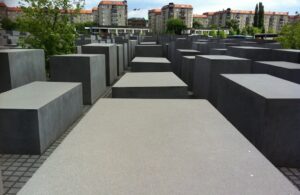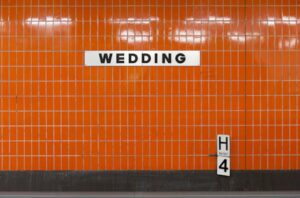Why bother travelling to Berlin when you can just read about the history or culture online or in a book? Wouldn’t that be better, saving time and energy? What can you learn from being there, in other words, that you can’t learn from an online search sitting in your favorite coffee shop near your house?
If you’re chasing after a single fact or a simple image, sure, you can just look it up online. But as my old military history teacher once said, «there is simply no substitute for walking the ground. If you want to understand a battle on a deeper level, you have to see what they saw.» This advice struck my young mind and stuck with me, and it turns out, he was right.
But this recommendation of his applies to far more than just studying battlefields. If you want to get to know a city, its history, its culture, its vibe, you simply have to visit, and the longer you stay, of course, the better you’ll know the place.
I took this to extremes, I must admit, having spent nearly 14 years in Russia studying Soviet history and Stalinism from the inside out. What was a mystery in the books – how Soviet society repeatedly attacked itself from the 1920s to the 1950s in what seemed to be an utterly random and senseless manner – gradually became clear not only with constant research but from living among the Russians today, on their own soil. I found that after some time had passed, I began to understand viscerally what I had read in the books and in the archives . Moreover, I got to know the geography of the city intimately, and knew where the events I read about took place on the ground. It made all the difference in my comprehension of that era and culture.
Which brings us back to Berlin. Now on a typical trip, you certainly won’t have over a decade to devote to understanding the German capital from the inside out! But simply walking the ground and looking closely with your eyes wide open and with a questioning mind will reveal things that you’d be hard pressed to even consider asking from just reading a website or reading a book.
Take the site of Hiter’s bunker, now a parking lot next to a Communist era block of flats. There’s literally nothing to see from the Nazi era there, yet it has become one of the city’s leading tourist spots, much to the constant annoyance of the locals who have to live there in that neighborhood. Yet the tour groups that stop by there seem to miss the truly interesting story. Namely, exactly why does this place look the way it does today?
And when you stand there, you start thinking that what grabs the attention is less Hiter’s final weeks, and more how the Communist state, followed by the modern German state, have wrestled with this difficult story and have transformed the cityscape to reflect exactly how the past «should» be handled. The communists for decades left it a barren wasteland, and then in the 1980s built a series of elite blocks of flats, where only the most trusted lived. Hitler, you see, spent his last moments on earth mere meters from what would be the dividing line between East and West. In the 80s, these flats for the privileged were the final buildings you met before encountering the infamous Berlin Wall, which is itself now long gone.
You simply have to go and stand there to understand the utter punch-to-gut irony of the elite of the Communist world living in apartment buildings erected over the spot where the elite of the Nazi era crouching hiding underground in 1945. You begin to comprehend the lengths to which the East Germans went to damn the past by eradicating it, and the subsequent reluctance of the modern state to admit anything happened there at all. It was only in 2006 that the Federal Republic marked the spot with a sign, and that only after immense pressure due to the World Cup coming to town that year.
You also get a deeply felt sense of what it’s like to live in Germany’s history-haunted capital when you stand there and watch the daily horde of tourist groups flood into what is today a functioning parking lot. I’ve seen people lean on or even sit on cars parked there. Visitors put their water bottles on the hoods and bonnets of residents’ vehicles or crowd around the entrance to the lot, oblivious to the cars trying to get in or out. When you watch this, you see how the past directly effects the peace of residents just trying to make a living in the city, and who happen to be squatting over one of the most infamous pieces of earth in Europe.
Then you watch as those same groups ignore the East German part of the story, as their guides just don’t know it or know how to make it relevant. You understand there and then that although history doesn’t repeat itself, historians repeat each other all the time. You can stand there and question what the role of history is, how we remember it, how politicians dictate what form that memory should take and why.
And then, hopefully it hits you. THIS is why you travel. This is why you put the books down and come to walk the ground. When you explore the streets of Berlin, be sure to keep an eye out for the story, the real story, the one not in the books and the one you wouldn’t even think to ask if you were sitting at home in your armchair. That’s where Berlin’s travel magic happens.




